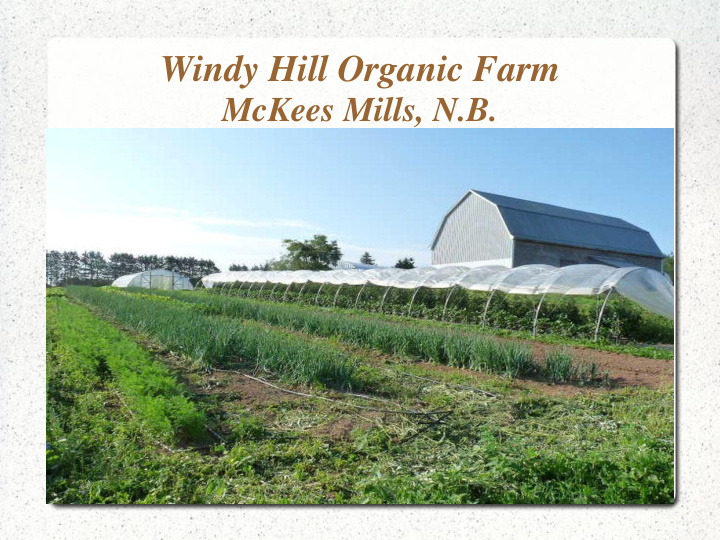



Windy Hill Organic Farm McKees Mills, N.B.
Goals Protect soil from erosion Build up quantity and diversity of macro and micro life in the soil Build soil that drains well and has good water holding capacity Have high bioavailability of nutrients in the soil to support plant growth Produce very nutritious and delicious food Try to maintain as closed a loop system as possible by recycling our own products back into production
Manure Pile made from goat and chicken manure, vegetable trimmings, mortalities and offal from on-farm slaughtering Pile is built in layers and “turned” naturally but not truly composted Manure is spread, followed by a cover crop and vegetables grown the following season Other source: goats' winter accommodation has a tall manure pack by spring which is spread on fields Only enough for each field to get manure every 2 years
Compost Made from wood chips and seafood waste: lobster shells, etc. Allowed for organic production Buy next year's compost this year to let it age and build fungal hyphae for better degredation and nutrient release Used as a soil innoculant more than major nutrient source
Cover Crops/Green Manures Used to add organic matter to soil: annual grasses Adds nutrients: nitrogen from legumes (clover, peas, vetch) or phosphorous from buckwheat Improve soil drainage and air movement through deep root penetration: yellow blossom sweet clover in a two year rotation Plant either one crop per season and manage by mowing or two different crops, eg. Buckwheat followed by oats and peas
Rotations with Livestock Experimental so far and always with poultry Plant grass and legume species that work for poultry grazing, eg. Not too woody when mature: annual ryegrass and red or white clover Some poultry grazing mixes contain mustards and we avoid these because we already grow a lot of brassicas Mobile pens allow for an even spread of manure over the land Feed organic feed to avoid GMO seeds in the field
Thank You!
Recommend
More recommend